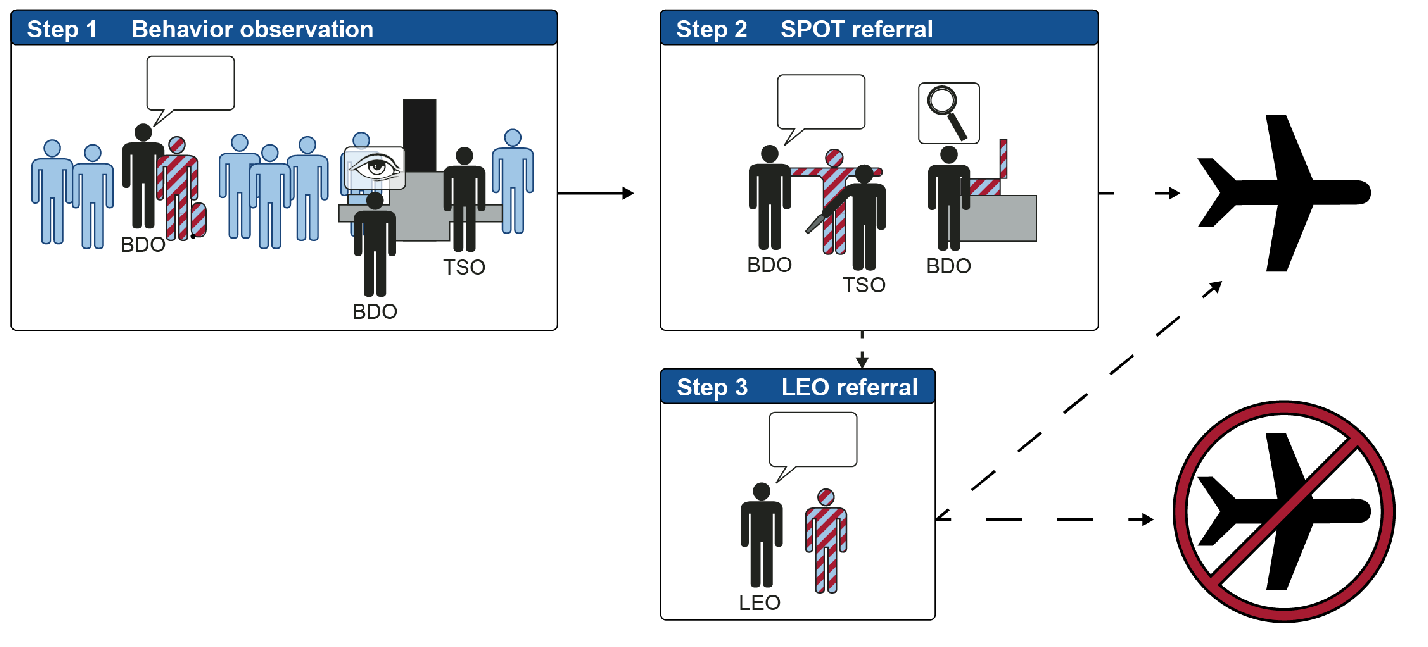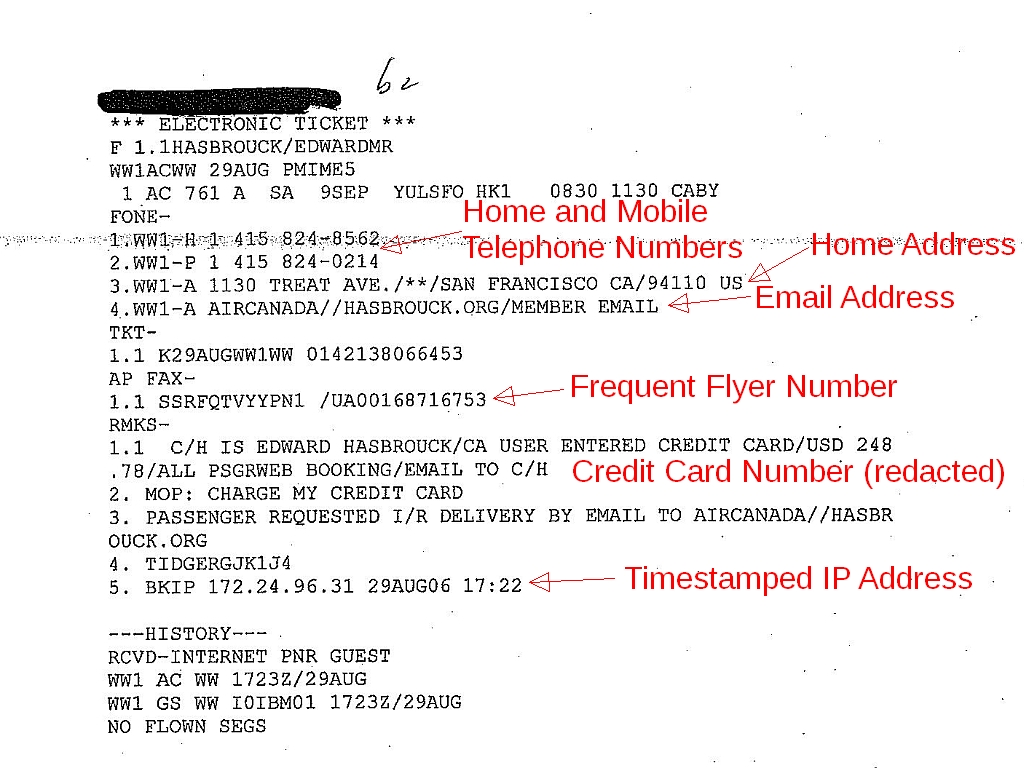First “no-fly” trial to begin this week in San Francisco
For the first time ever, a lawsuit challenging a U.S. government “no-fly” order goes to trial on Monday.
The U.S. government issues “no-fly” orders (or “no-board recommendations“, of which there were almost 10,000 last year) to airlines, forbidding common carriers from transporting specified persons. The administrative decisions to issue these orders are made in secret, on the basis of secret allegedly “derogatory” evidence (or no evidence at all), according to secret criteria (or no criteria at all), at the “discretion” of the agencies that “nominate” individuals for inclusion on the “no-fly” list).
Airlines aren’t told why they have been forbidden to transport any particular person, and are forbidden from telling anyone that they are on the “no-fly” list — although of course that eventually becomes obvious when the airline refuses to issue a boarding pass to an otherwise qualified fare-paying would-be passenger. The U.S. government’s policy is never to confirm or deny the existence of a no-fly order. That is considered a “state secret”.
Needless to say, all this makes a mockery of due process and has, until now, frustrated judicial review of no-fly decisions and orders. Despite numerous attempts to challenge the system of “no-fly” lists and orders, Rahinah Ibrahim v. Department of Homeland Security, et al. (docket and more recent documents) is the first such case to make it to trial.
Dr. Ibrahim, a Malaysian citizen, was a doctoral candidate at Stanford University, in the U.S. on a valid student visa, when she tried to fly home to Malaysia with her daughter in 2005. She was refused passage on a United Airlines flight from San Francisco International Airport, detained, and interrogated by SFO airport police. Although she was ultimately bound for Malaysia, she had planned to stop over in Hawaii to present a research paper at a conference there. She was denied boarding on a domestic flight from San Francisco to Kona. (Since this was a domestic flight, the no-fly instructions would have been transmitted through the TSA’s “Secure Flight” system.) She was allowed to fly to Kona the next day, and on to Malaysia after the conference a few days late, but her U.S. visa was then revoked (although she wasn’t notified, and didn’t learn this until she was at the airport in K.L. trying to check in for a flight back to SFO a couple of months later). She hasn’t been able to return to the U.S. since, even though she had lived legally in the U.S. for many years, had met and married her husband in the U.S., and one of her children was born in the U.S. and is a U.S. citizen. She completed her dissertation remotely, received her Stanford Ph.D. in absentia, and is now a professor at a major Malaysian public university, with an extensive list of academic publications.
Several other “no-fly” lawsuits have been dismissed without getting far enough to have a judge, much less a jury, review the challenged “no-fly” orders on their merits. Others that haven’t yet made it to trial, but haven’t yet been dismissed, include that of Gulet Mohamed in Northern Virgina and Latif et al. v. Holder in Portland, OR. Both of these cases involve U.S. citizens who were effectively banished from the U.S. by having their names being placed on the “no-fly” list while they were abroad, preventing them from coming home.
The city and county of San Francisco paid Dr. Ibrahim $225,000 to settle her claims against the airport police, but the Federal government agencies and employees have opposed Dr. Ibrahim’s right to even have the court review the legality of their actions.
The Federal defendants being sued by Dr. Ibrahim have twice appealed to the 9th Circuit Court of Appeals, but twice failed to get the case dismissed before trial. Next, they tried to get Judge Alsup to follow the DHS’s own original decision-making procedure and dismiss the case on the basis of secret evidence they proposed to submit in camera and under seal (so that neither Dr. Ibrahim nor her lawyers could see or contested the allegations against her). At that point, Judge Alsup refused even to look at the profferred secret evidence, declaring that travel is a right that cannot be denied without “an effective means of redress”.
Next the government invoked the “state secrets” privilege against disclosing certain information about whether, and if so, why and how, it had ordered airlines not to transport Dr. Ibrahim. Judge Alsup allowed the government to withhold much of this information, but again refused to dismiss the complaint entirely, ordering the parties to prepare for trial and allowing Dr. Ibrahim a chance to try to prove her case on the basis of other evidence.
Since that ruling in April of this year, ordering the parties to proceed, there have been continuing disputes over discovery and depositions. Judge Alsup has issued rulings denying Dr. Ibrahim’s requests to amend her complaint and for additional discovery related to whether she was the subject of NSA surveillance or this formed part of the basis for the no-fly order against her; prohibiting the government from using any evidence to defend itself that wasn’t disclosed to Dr. Ibrahim and her lawyers; and setting the case for trial on the remaining issues.
Judge Alsup himself has already seen the secret evidence that he has forbidden the government to introduce or rely on in the trial, as part of his in camera review of whether it had to be disclosed to DR. Ibrahim and her lawyers. But Judge Alsup refused to recuse himself or assign the case for trial by a judge who hasn’t seen the secret evidence that isn’t supposed to be considered in reaching a verdict. Judge Alsup claims to believe that unlike a jury, he can pretend that he never saw this secret evidence, and reach an impartial verdict that disregards it. This sort of pretense is bizarre and unrealistic but routine in bench trials.
The trial in Dr. Ibrahim’s case is scheduled to start Monday, December 2nd, and continue through Monday, December 10th, before Judge William Alsup of the U.S. District Court for the Northern District of California, Courtroom 8 (19th Floor), Phillip Burton Federal Building & U.S. Courthouse, 450 Golden Gate Ave, San Francisco. The trial will begin each weekday at 7:30 a.m. and recess at 1:30-2:30 p.m. depending on the day.
No immediate decision on the facts or the law is expected. The judge in a Federal trial like this will typically issue a written verdict some weeks or months after the end of the trial.
Despite the Constitutional right to a “public” trial, government-issued ID credentials are required for admission to the Federal Building. Under the court’s General Order 58 (“Regulating Possession and Use of Electronic Devices in the Courthouse”), cell phones, laptop computers, and other electronic devices are allowed in the courthouse (subject to being inspected and deemed not to be dangerous by the guards at the entrance), and can be used in the lobby, hallways, etc., but can’t be used in courtrooms without special permission. Cameras and recording devices are also allowed in the building, but can’t be used anywhere inside. Photography and recording, long prohibited in Federal courts, are permitted in the Northern District of California only as part of a pilot project and only in cases selected by the court in its discretion.
At the end of the day, the U.S. government is likely to claim that Dr. Ibrahim was allowed her day in court. But that will be a day in court in which the allegedly derogatory allegations against her, and any evidence purportedly supporting them, will remain secret from her but will have been provided to the deciding judge.




